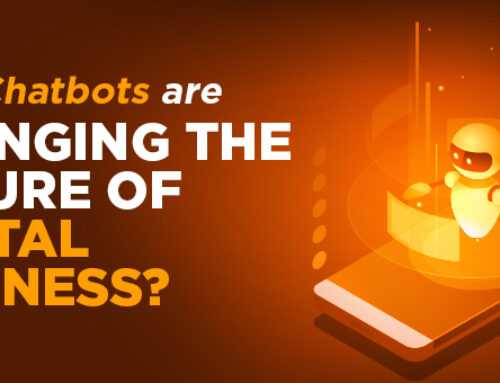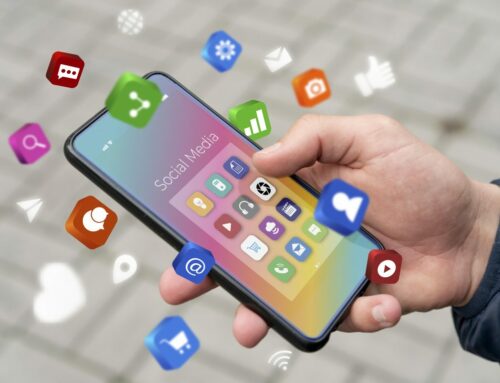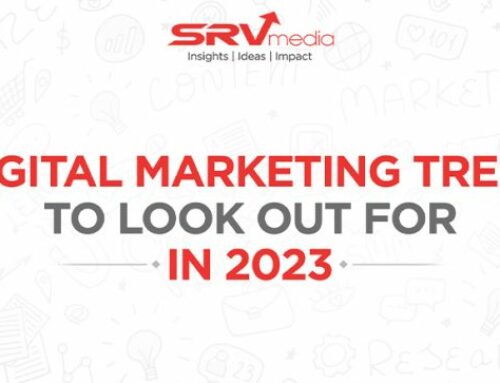The Evolution of Digital Marketing in 2024: Trends and Predictions

Digital marketing has seen immense growth over the past decade. As technology continues to evolve at a rapid pace, so do the channels, tools, and strategies within the digital marketing sphere. In 2024, marketers will need to keep a pulse on these technological advancements to utilize them effectively and deliver value to their audiences.
Specifically, there are four key trends that will shape the continued evolution of digital marketing: further personalization, increased automation, voice search optimization, and augmented reality (AR) experimentation. Companies that strategically adapt and apply these trends stand to gain a competitive advantage. On the other hand, organizations that don’t embrace change and fail to progress their digital tactics risk falling behind their more innovative competitors.
Trend 1: Extreme personalization
As technology continuously improves, brands will have an unprecedented ability to tailor messaging and offers directly to customers on an individual level. Leveraging the expansive consumer data available, sophisticated algorithms can piece together detailed customer profiles and preferences in order to determine micro-targeted strategies per person.
In 2024, more marketing channels will adopt these personalization capabilities. Email marketing is one area primed for greater customization, shaping messaging around aspects like demographics, previous purchases, and demonstrated interests. Even display and social advertising can tap into personalization engines to dynamically generate ads to resonate more meaningfully with each viewer.
However, brands must approach extreme personalization ethically. As data privacy concerns mount, transparency and consent are imperative. Savvy consumers want personalized experiences but also control over how much of their information is leveraged. Digital marketing strategies in 2024 must strike the right balance between customization and consumer privacy.
Trend 2: Marketing automation reaches more channels
Automation tools will expand beyond email and social media into additional marketing channels like paid ads and campaign analysis.
Intelligent algorithms will optimize and place ads automatically, shifting budgets to better performing ads. Bots will also track performance to highlight areas needing improvement.
This automation will augment human marketers rather than replace them. With machines handling manual tasks, marketers can focus more on strategy, creativity, and understanding customers.
Marketing skills will need to evolve as well. While technical specialties remain important, creative brand thinking and leadership abilities will be critical long-term. Marketers should stay on top of automation trends while strengthening high-level skills.
Trend 3: Optimizing for voice search
Voice assistants like Alexa, Siri and Google Assistant are becoming ubiquitous. As consumers increasingly use voice commands rather than typing search queries, they expect quick, convenient spoken answers.
Brands must optimize content for these voice interactions. That means using natural language and keywords people would likely say out loud. It also requires creating bite-sized content nuggets that provide accurate answers via voice.
And voice is just one touchpoint in expanded customer journeys. Someone may ask Alexa about a product, then see an online ad, ask their smartwatch a follow up question, and finally buy on their mobile phone. Marketers must connect these dots across channels.
The brands that perfect voice search while linking it into broader journeys will gain an edge. Users will reward the services providing the fastest, most satisfying voice experiences with increased engagement and loyalty over time.
Trend 4: Experimenting with augmented reality
Augmented reality (AR) overlays digital elements onto the real world via smartphone cameras or AR headsets. AR technology will advance rapidly, with smart glasses eventually replacing phones.
This opens creative marketing possibilities. Businesses can let customers visually “try on” products like makeup or clothes. Interactive 3D product images and gamified AR ads also provide immersive experiences.
For digitally native generations, these experiments could profoundly impact customer engagement. People may actively seek out AR brand interactions for entertainment, education, or convenience.
The key is experimenting now even if AR remains niche. As the tech evolves, brands with more experience can fine-tune implementations for maximum delight and value. Early augmented reality tests set the stage for long-term adoption.
Predictions and Recommendations
As these four digital marketing trends accelerate, brands have opportunities but also risks. While personalization, automation and new formats can enhance customer connections, missteps could negatively impact brand perception.
To optimize opportunities while mitigating pitfalls, brands should:
- Audit existing strategies/assets – identify gaps for improved personalization and automation
- Budget for experiments with emerging voice/AR capabilities
- Reconfigure internal teams to enable collaboration between analytical, creative and technical experts
Focusing on these areas can best position brands to thrive amidst ongoing industry evolution. Digital marketing partners should play an advisory role to help future-proof approaches as new technologies reshape options. Prioritizing nimbleness and innovation makes continued relevance possible. The willingness to swiftly embrace change promises sustained marketplace leadership.
Beyond Innovation: Connecting Human Truths with Technology
While emerging technologies offer exciting potential for marketers in the coming years, meaningfully moving the needle also requires sharpening core brand strategy. Amidst the industry hype around automation, personalization
and “next big things,” the most resonant brands will marry technical capabilities with fundamental human truths.
Beyond chasing innovation for innovation’s sake, digital leaders must ask: how do our products, content and experiences ladder up to serve core customer wants and needs? The flashiest tactics imaginable matter little if poorly rooted in empathy-driven brand purpose.
So by all means, experiment boldly with the marketing frontiers opening before our eyes. But center those efforts on enhancing how people feel about—and connect to—brands daily. Measure success not by vanity metrics but against value delivered to human lives. Allow integrity to guide, not short-term gains. In doing so, the brands poised to dominate markets moving forward just may surprise us.
Conclusion
The key digital marketing trends to evolve rapidly through 2024 are: extreme personalization, expanded automation, voice search optimization, and augmented reality experimentation.
Proactively adapting to leverage these emerging capabilities will be vital for continued marketing success. Companies that fail to embrace change risk losing relevance and ceding ground to more innovative competitors.
The time for brands and their marketing partners to take action is now. They must push boundaries, run agile tests on new formats/platforms, and double down quickly on what gains traction. The next era of digital marketing leadership depends on the willingness to take smart risks. The future rewards those who evolve.












